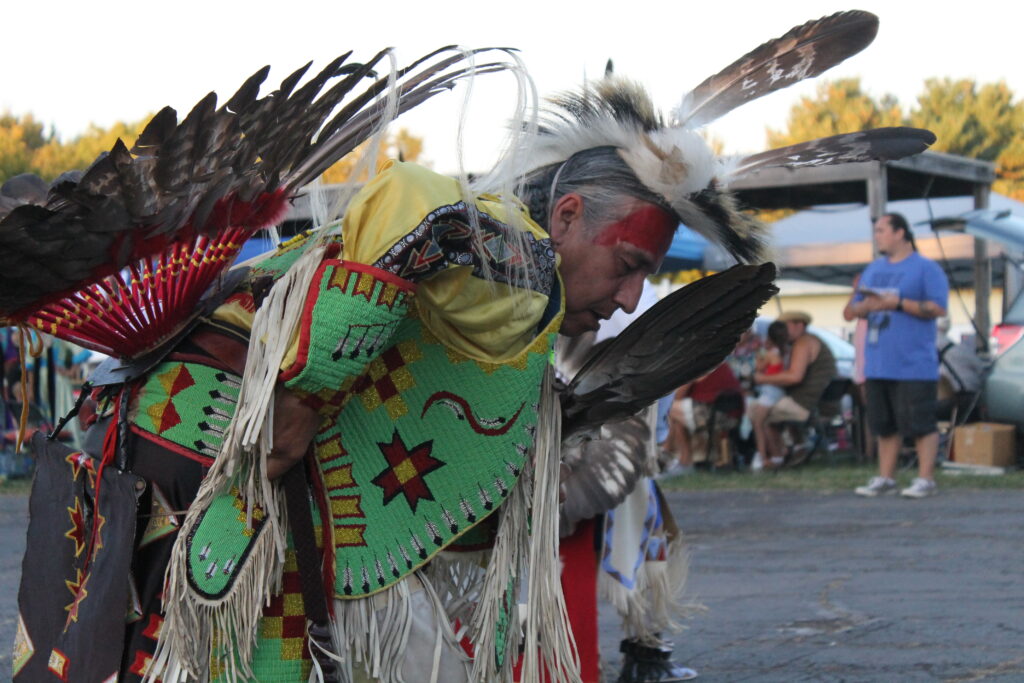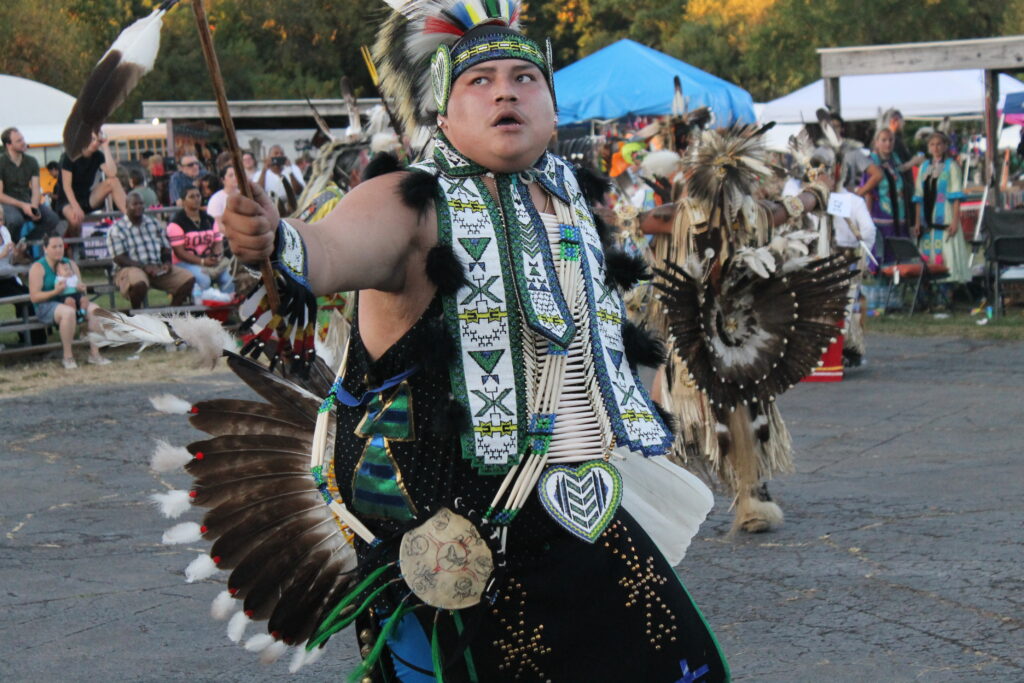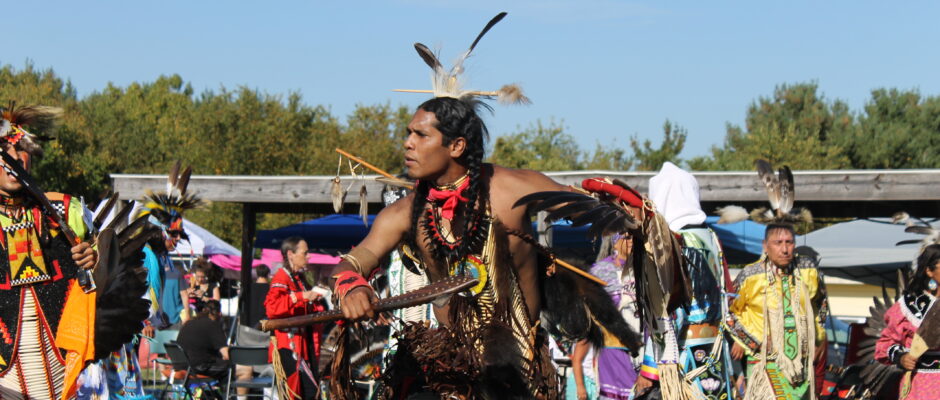Indigenous communities are an important part of Pennsylvania’s past and present. The Pittsburgh-area Council of Three Rivers American Indian Center (COTRAIC) is a perfect example of how this culture and its people have endured, adapted, and come together. In addition to educational and social-service programming, the organization hosts a yearly Pow Wow that draws thousands of people of all backgrounds, and features music, dance and drumming demonstrations, a market of Indigenous arts and crafts, and traditional food such as fry bread, chili, and buffalo burgers. After a 2020 pandemic hiatus, the 42nd annual iteration will run September 24 and 25, 2021, in Dorseyville, PA.
Longtime COTRAIC board member Miguel Sague came to Pennsylvania in 1961 and grew up in Erie, but he was born in “a center of Indigenous survival” in Cuba — he and his family are Taíno, Indigenous people of the Caribbean whose population was devastated by the violence, enslavement, and disease, but whose culture survives today.
Sague’s other name is Sobaoko Koromo, which means “Black Ribs.” He is an educator, artist, speaker, community advocate, and a behike (spiritual leader) of the Caney Indigenous Spiritual Circle, as well as a member of the United Confederation of Taíno People. After moving to Pittsburgh in 1976, he joined COTRAIC in the organization’s early days. Today, it is the only remaining Native American center in Pennsylvania.

The Council “began as a kind of a dream of three or four local families,” he recalls. These Indigenous residents of Pittsburgh wanted to celebrate their heritage and stay conscious of their rights. They incorporated COTRAIC as a nonprofit in 1972.
From the start, the organization ran social-service programs for Indigenous community members out of its first home, the upper level of an auto-parts store in the Homewood neighborhood. Four years later, COTRAIC saw a major opportunity: Three local military installations were decommissioned and the land was made available to nonprofits. The group’s application for a hilltop site in Indiana Township’s Dorseyville, about 20 minutes north of Pittsburgh, was accepted. COTRAIC members remodeled and refurbished the existing structures, dubbed the site Singing Winds, and moved there in 1976.
The early 1980s brought another landmark in program development: COTRAIC began running Head Start early education programs (Sague was one of the original teachers at Singing Winds). Today, these preschool offerings are COTRAIC’s largest offering, serving local children of all backgrounds. The organization’s other initiatives, including elders’ programs, employment help, and job training, serve Indigenous community members.
Council members are also active regional advocates. They joined calls for the removal of a bronze statue of Christopher Columbus in Schenley Park, against loud opposition from a Pittsburgh-based Italian American heritage group.
The Council began as a kind of a dream of three or four local families.Miguel Sague
According to Sague, Indigenous locals who oppose public monuments to Columbus have support from many Italian Americans, but many others are “recalcitrant.” (While the Pittsburgh Art Commission voted last year to remove the statue, a subsequent lawsuit stymied the effort, and the statue still stands, wrapped in a tarp.)
COTRAIC members are also proud of their role in advocating to change the name of a nearby recreational area, formerly called Squaw Valley Park, to O’Hara Township Community Park. Today, the old name is considered a slur, and is especially offensive to Indigenous women,
“We worked very hard for a number of years to have that changed,” says Sague. “We did succeed.”
The effort was not without controversy: Replacing the slur with the name of the township, which proponents hoped would be a neutral solution, did not appease some locals who were angry at the change. But the new name won out.
The township commissioned local author and historian Tom Powers to develop educational plaques for the park that celebrate its true history, including its Indigenous history. Powers worked with COTRAIC and others to develop the new signage, which includes a painting by Sague of Seneca people (the land’s original Indigenous inhabitants) in their traditional garb.

As COTRAIC members prepare for their annual Pow Wow, October’s Indigenous People’s Day is also fast approaching. As a Taíno person, the shift from marking Columbus Day to celebrating Indigenous People’s Day, happening in many cities across the U.S., has been especially meaningful to Sague.
“This is very personal to Taínos, the only native people that Christopher Columbus actually saw,” he explains. While the effects of European colonizers eventually reached Indigenous people throughout the Americas, Sague points out that “Columbus directly affected my people, so it’s important that when people talk about Indigenous People’s Day, they do mention the Taíno people.”
While he lauds the local government for supporting Indigenous initiatives, he notes that Pittsburgh has yet to organize a large-scale Indigenous People’s Day observance. He hopes that could change in the future.
ALAINA JOHNS is a Philadelphia-based freelance writer and the Editor-in-Chief of BroadStreetReview.com, Philly’s hub for arts, culture and commentary.



